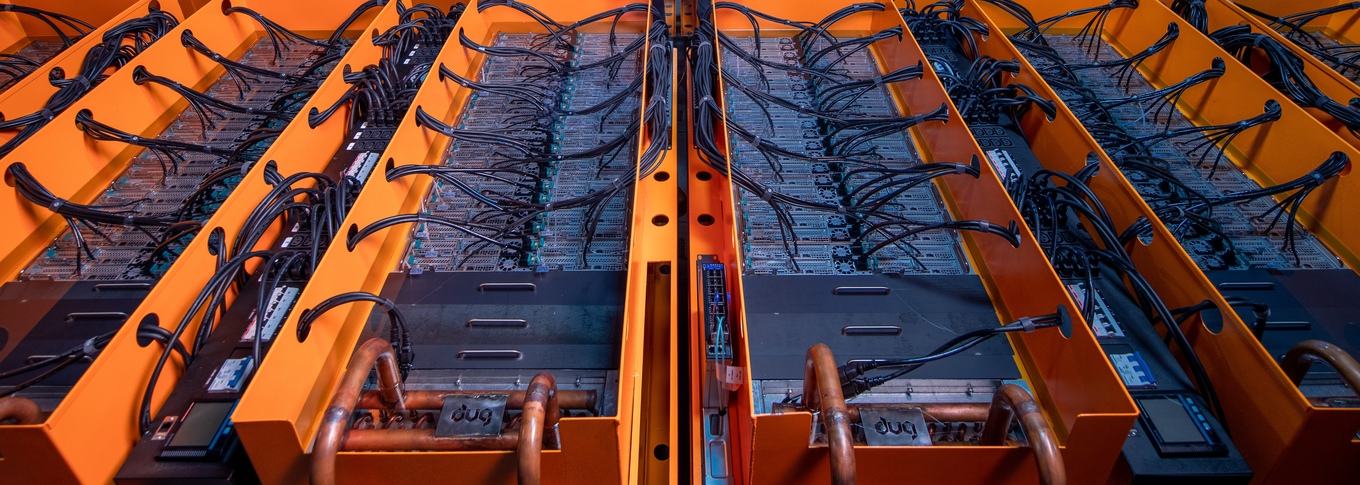Werbung
In den USA schließen sich zahlreiche öffentliche Einrichtungen zusammen, um Rechenleistung für die Forschung an Wirk- und Impfstoffen gegen das Coronavirus zur Verfügung zu stellen. Das COVID-19 High Performance Computing(HPC) Consortium wurde von der White House Office of Science and Technology Policy, dem US Department of Energy (DoE) und IBM initiert.
Auf Seiten der privatwirtschaftlichen Unternehmen beteiligt sind neben IBM auch noch Amazon Web Services, Google Cloud und Microsoft. An Lehreinrichtungen beteiligen sich das Massachusetts Institute of Technology und das Rensselaer Polytechnic Institute. Das DoE beteiligt sich mit zahlreichen Laboratorien und daran angeschlossenen Supercomputern, die teilweise schon seit Wochen mit den Problemen beschäftigt sind. Konkret sind dies:
- Department of Energy National Laboratories
- Argonne National Laboratory
- Lawrence Livermore National Laboratory
- Los Alamos National Laboratory
- Oak Ridge National Laboratory
- Sandia National Laboratories
Auch Bundesbehörden wie die National Science Foundation und die NASA beteiligen sich. Über ein Online-Portal können Einreichungen gemacht werden, welche Projekte die Ressourcen bekommen sollen. Auf der Seite des Projektes gibt es weitere Informationen zum Konsortium.
Insgesamt stehen 16 Supercomputer mit einer Rechenleistung von 330 PFLOPS zur Verfügung. Gemeinsam arbeiten 775.000 Prozessor-Kerne und 34.000 GPUs in den Systemen. Ein paar Details zu den einzelnen Systemen:
Oak Ridge Summit: 200 PFLOPS, 4.608 Nodes:
- 2x IBM POWER9 per node
- 42 TFLOPS per node
- 6x NVIDIA Volta GPUs per node
- 512 GB DDR4 + 96 GB HBM2 (GPU memory) per node
- 1600 GB per node
- 2 x Mellanox EDR IB adapters (100Gbps per adapter)
- 250 PB, 2.5 TB/s, GPFS storage
Lawrence Livermore + Los Alamos + Sandia: 31,7 PFLOPS, 7.001 Nodes
Argonne Theta: 11,69 PFLOPS, 4.292 Nodes
- 1x Intel KNL 7230 per node, 64 cores per CPU
- 192 GB DDR4, 16 GB MCDRAM memory per node
- 128 GB local storage per node
- Aries dragonfly
- 10 PB (Lustre) + 1 PB (GPFS) storage
RPI AiMOS: 11,1 PFLOPS, 252 Nodes
- 8,045 PFLOPS Max (Linpack)
- 252 IBM Power AC922 Systems
- 2x IBM POWER9 CPU per node, 20 cores per CPU
- 6x NVIDIA Tesla GV100 per node
- 32 GB HBM per GPU
- 512 GB DRAM per node
- 1.6 TB NVMe per node
- EDR InfiniBand
- 11 PB GPFS distributed storage
MIT/MGHPCC Supercloud: 6,9 PFLOPS, 440 Nodes
- 5,1 PFLOPS (Linpack) 2.0 PF Peak
- 440 nodes
- 2x Intel x86 (18 CPU cores per node)
- 2x NVIDIA V100 GPUs pe node (880 total)
- 32GB HBM per GPU
- InfiniBand EDR interconnect
- 3 PB scratch storage
MIT/MGHPCC Satori: 2,0 PFLOPS, 64 Nodes
- 1,7 PFLOPS (Linpack) 2.0 PF Peak
- 64 nodes
- 2x POWER9 40 CPU cores per node
- 4x NVIDIA V100 GPUs per node (256 total)
- 32GB HBM per GPU
- 1.6 TB NVMe per node
- EDR InfiniBand
- 2 PB scratch storage
IBM Research WSC: 2,8 PFLOPS, 54 Nodes
- 54 AC922 nodes
- 2x POWER9 CPU per node, 22 cores per CPU
- 6x NVIDIA V100 GPUs per node (336 total)
- 512 GiB DRAM per node
- 1.4 TB NVMe per node
- 2 x EDR InfiniBand per node
- 2 PB GPFS distributed storage
NSF Supercomputing Systems: 65,6 PFLOPS, 17.653 Nodes
NASA Supercomputing Systems: 19,13 PFLOPS, 15.800 Nodes
Amazon Web Services
- Amazon EC2 C-type Instances (Intel Xeon Platinum 8000 Series
- Amazon EC2 P-type instances (NVIDIA V100 Tensor Core GPUs)
Wer seine privaten Ressourcen zur Verfügung stellen will, kann dies per Folding@Home tun. Zuletzt erreichte das Netzwerk eine Rechenleistung von fast 475 PFLOPS.

